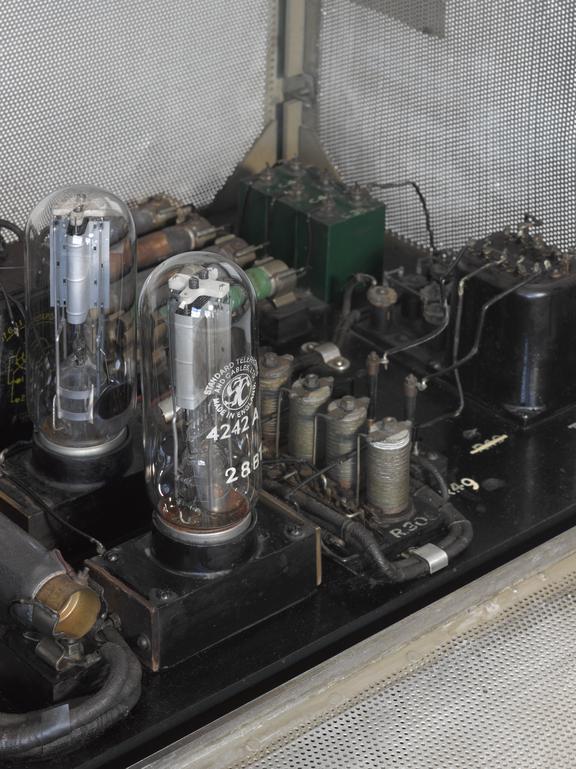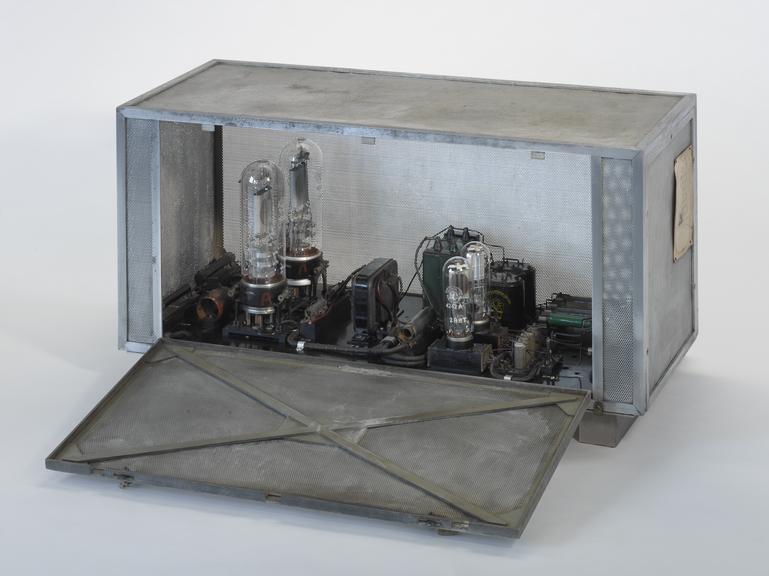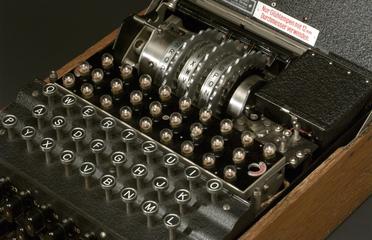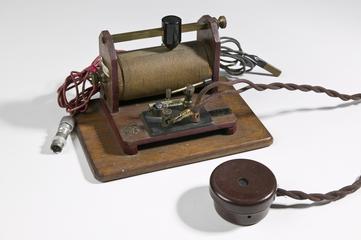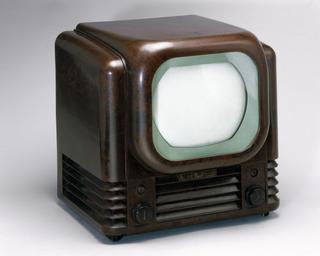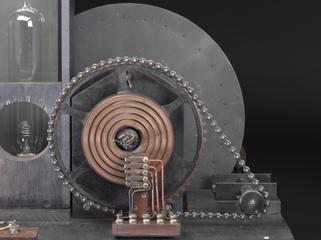STC 4212 E triode valve from Daventry short-wave transmitter
STC 4212 E triode valve from Daventry short-wave transmitter, made by Standard Telephones and Cables, England, 1925-1970.
More
This valve was taken from the first short-wave radio transmitter to be installed at Daventry in 1932. Radio transmissions had been made from Daventry since 1925, but the shortwave receivers were installed specifically for broadcasting radio programmes to the Empire via the Empire Service (later the BBC World Service). Four two-hour programmes were provided daily, broadcasting initially only in English to Australia and New Zealand, India, East and Southern Africa, West Africa and Canada. On the first day of the Empire Service, Sir John Reith, the first Director General of the BBC, gave the Empire Service’s opening address. His speech included a warning about the quality of the new service: "Don't expect too much in the early days; for some time we shall transmit comparatively simple programmes, to give the best chance of intelligible reception.”





